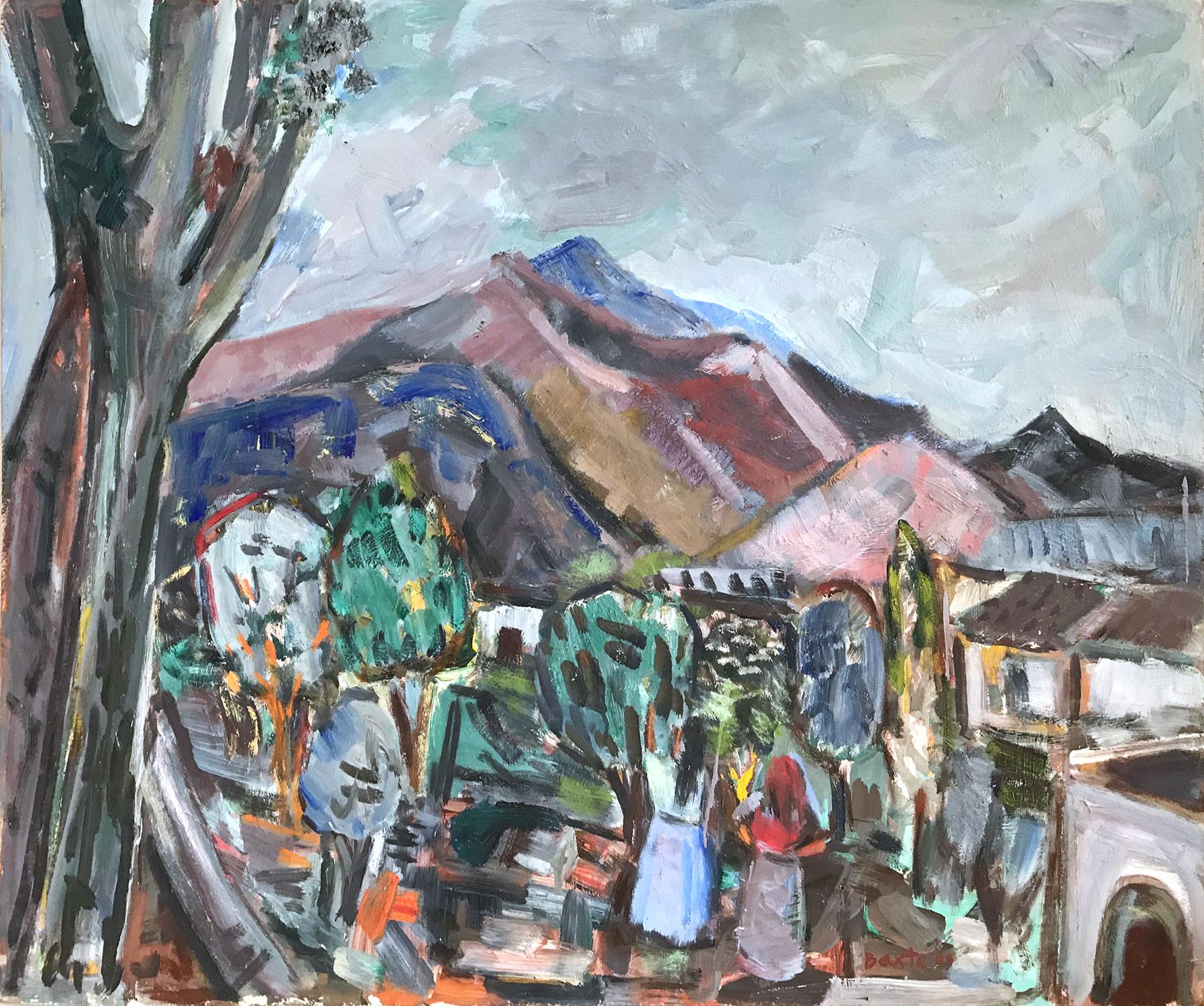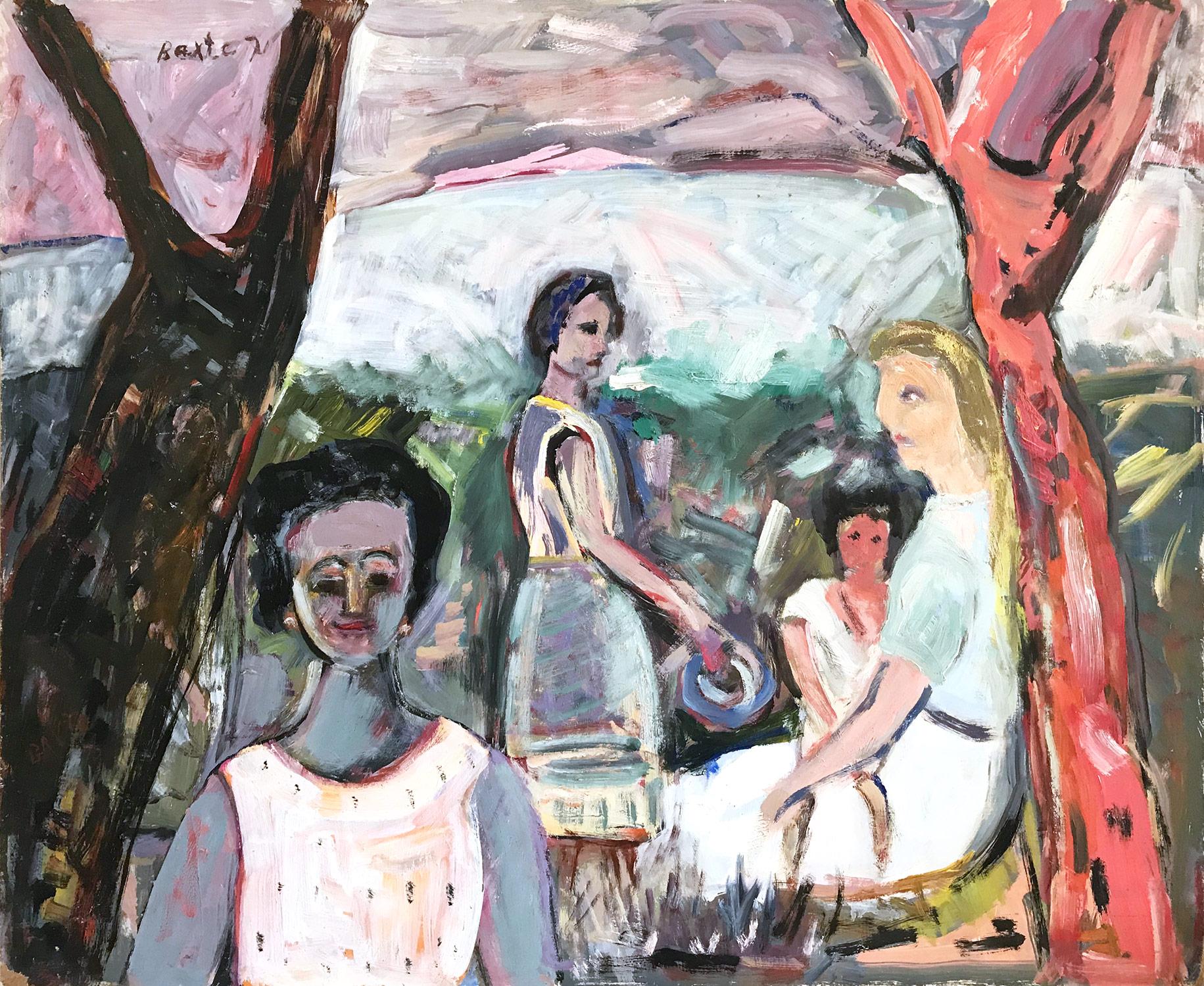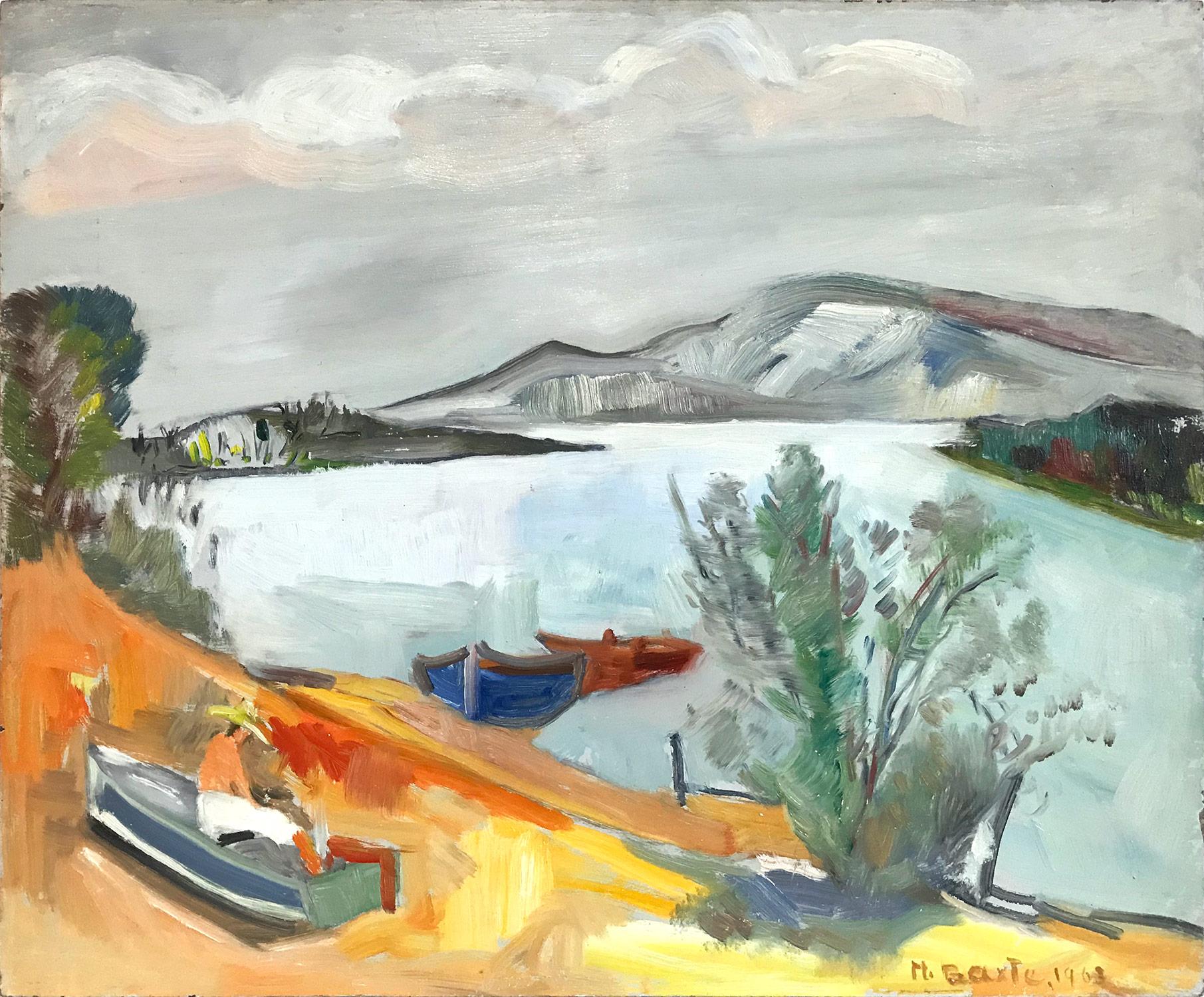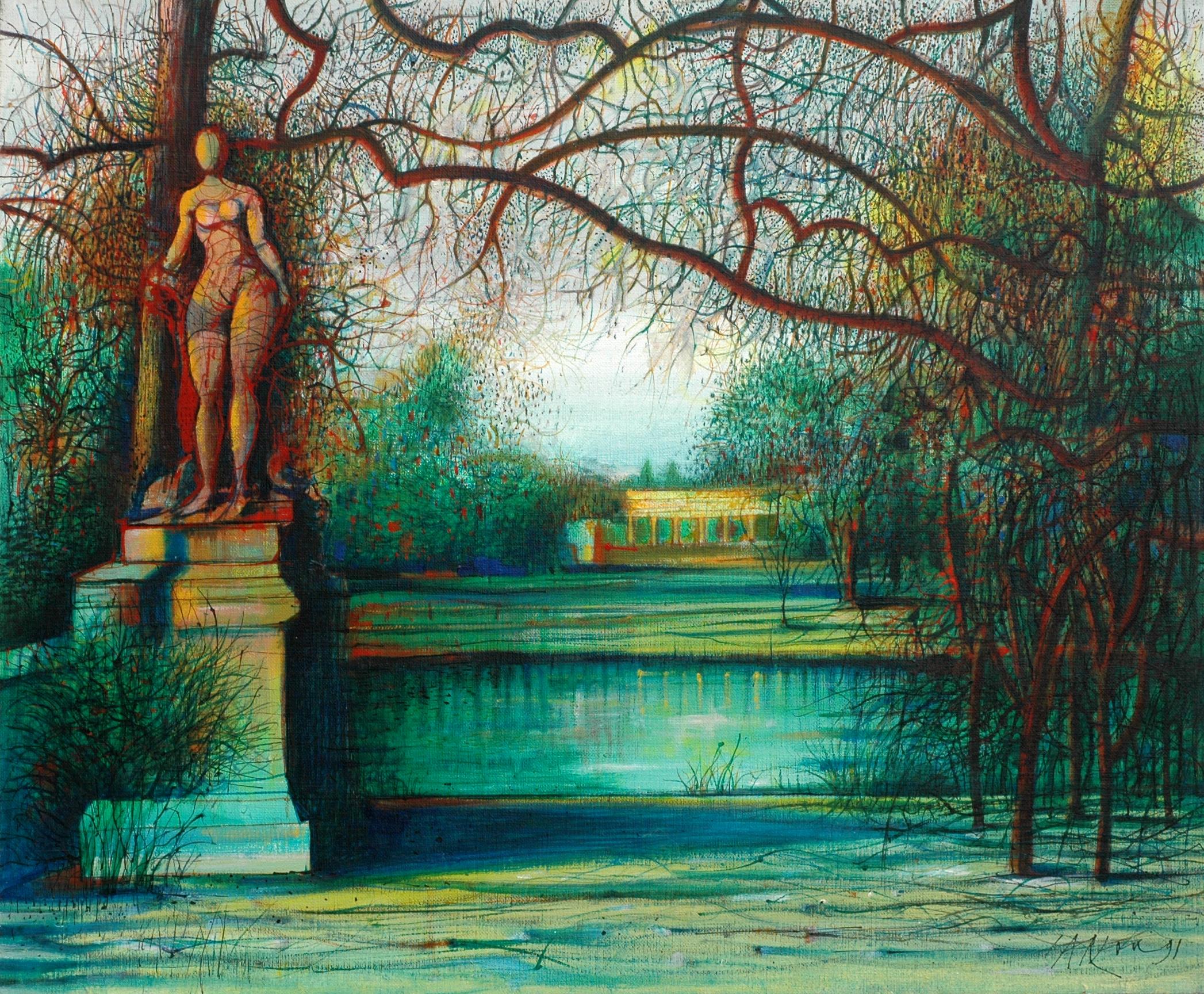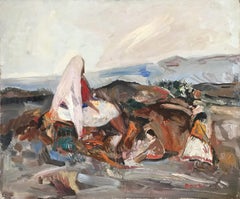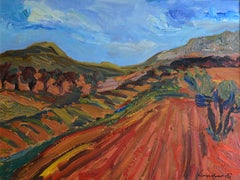
Sainte-Baume, Provence
View Similar Items
Want more images or videos?
Request additional images or videos from the seller
1 of 8
François LombardiSainte-Baume, Provence1960s
1960s
About the Item
- Creator:François Lombardi (1880 - 1983)
- Creation Year:1960s
- Dimensions:Height: 25.48 in (64.7 cm)Width: 31.5 in (80 cm)Depth: 1.58 in (4 cm)
- Medium:
- Movement & Style:
- Period:
- Condition:
- Gallery Location:Saint Amans des cots, FR
- Reference Number:1stDibs: LU108826151942
About the Seller
5.0
Vetted Seller
These experienced sellers undergo a comprehensive evaluation by our team of in-house experts.
1stDibs seller since 2018
34 sales on 1stDibs
More From This SellerView All
- Paul Collomb, Paris, Eiffel Tower, Invalides, The Beautiful View, Oil on CanvasLocated in Saint Amans des cots, FROil on canvas by Paul Collomb (1921-2010), France, 1960s. The beautiful view. Measurements : with frame: 54.5x41.2 cm - 21.5x16.2 inches, without frame: 46x33 cm - 18.1x13 inches, fo...Category
1960s Expressionist Figurative Paintings
MaterialsCanvas, Oil
- Edith Desternes, The Church Notre-Dame de l'Assomption in Auvers-sur-Oise, 1920sLocated in Saint Amans des cots, FROil on canvas by Edith Desternes (1901-2000), France, 1920s. The Church Notre-Dame de l'Assomption in Auvers-sur-Oise. This church has been painted in 1890 by Vincent van Gogh. At first glance, one is struck by the strength of this work. Then, on examination, one is captivated by this depth of soul and technique. Edith Desternes uses a thick paint here where black, and dark colors, play a privileged role. Thus the contrast between the warm and cold tones, surrounded by black, create an intense luminosity reminiscent of stained glass windows from the Middle Ages. Georges Rouault is present in this powerful work. With frame : 87x66 cm - 34.25x26 inches ; without frame : 81x60 cm - 31.9x23.6 inches ; 25P Format. Signed "E. Desternes" lower right (see photo). On the back, we notice the pictorial material dropped by the artist, it is not a restoration. The condition is excellent ! Céline Édith Desternes was born in Paris on February 21, 1901. She was the daughter of Louis Desternes (1864-1936), professor at the Lycée...Category
1920s Expressionist Figurative Paintings
MaterialsCanvas, Oil
- Bories-en-Provence Village Near Gordes, Large Oil on CanvasLocated in Saint Amans des cots, FROil on canvas by Paul Clement (1906-), France, 1967. Bories-en-Provence near Gordes. Measurements : with frame: 106x87 cm - 41.7x34.25 inches, without frame: 100x81 cm - 39.4x31.9 in...Category
1960s Expressionist Figurative Paintings
MaterialsCanvas, Oil
- Alfred SALVIGNOL, Port of Villefranche-sur-Mer, Oil on panel, Beg. 20th C.Located in Saint Amans des cots, FROil on panel by Alfred SAVIGNOL (1877-), Beginning of the 20th century, France. Port of Villefranche-sur-Mer (between Nice and Monaco). With frame: 68x 56 cm - 26.8x22 inches ; with...Category
Early 20th Century French School Figurative Paintings
MaterialsWood, Oil
- Luis Lopez, Oil on canvas "Beach Near Valencia", fishermenLocated in Saint Amans des cots, FROil on canvas by Luis LOPEZ, 1983, Spain. Beach near Valencia. Fishermen, fisherman. With frame: 106.7x80 cm - 42x31.5 inches ; without frame: 92x65 cm - 36.2x25.5 inches. P30 format...Category
1980s Realist Figurative Paintings
MaterialsCanvas, Oil
- Oil on Canvas by Jallais, Boats in Port, 1960sLocated in Saint Amans des cots, FROil on canvas by Jallais, France, 1960s. Boats in port. In its pretty dark brown wooden frame. With frame: 68x58 cm - 26.8x22.8 inches, without frame: 61x50 cm - 24x19.7 inches. 12F ...Category
1960s Post-Impressionist Figurative Paintings
MaterialsCanvas, Oil
You May Also Like
- "Mexican Landscape Scene of Mother with Children" Expressionistic Style PaintingBy Michael BaxteLocated in New York, NYA strong modernist oil painting depicted in 1962 by Russian painter Michael Baxte. Mostly known for his abstracted figures on canvas or street scenes, this piece is a wonderful representation of his portraits in countryside landscapes with expressive use of color, shape, and form. Later in his career, Baxte explores Expressionism, infusing both European and North American stylistic trends. Art measures 21.25 x 25.5 inches Michael Posner Baxte was born in 1890 in the small town of Staroselje Belarus, Russia. For the first half of the 19th century, it was a center of the Chabad movement of Hasidic Jews, but this group was gone by the middle of the 19th century. By the time the Baxte family immigrated to the United States at the beginning of the 20th century, the Jewish population numbered only on the hundreds. The native language of the Baxte family was Yiddish. It is likely that the death of Michael Baxte’s father triggered the family’s immigration. Three older brothers arrived in New York between 1903 and 1905. Michael and his mother, Rebecca, arrived in 1907. By 1910 Michael, his mother, and brother, Joseph, were living in New Orleans and may have spent some time on a Louisiana plantation. Around 1912, Michael Baxte returned to Europe to study the violin. In 1914 he, his mother, and Joseph moved to New York City. Meanwhile, in Algeria, a talented young woman painter, Violette Mege, was making history. For the first time, a woman won the prestigious Beaux Art competition in Algeria. At first, the awards committee denied her the prize but, with French government intervention, Mege eventually prevailed. She won again 3 years later and, in 1916, used the scholarship to visit the United States of America. When Violette came to New York, she met Baxte, who was, by then, an accomplished violinist, teacher, and composer. Baxte’s compositions were performed at the Tokyo Imperial Theater, and in 1922 he was listed in the American Jewish Yearbook as one of the prominent members of the American Jewish community. As a music teacher, he encouraged individual expression. Baxte stated, “No pupil should ever be forced into the imitation of the teacher. Art is a personal experience, and the teacher’s truest aim must be to awaken this light of personality through the patient's light of science.” By 1920 Michael Baxte and Violette Mege were living together in Manhattan. Although they claimed to be living as husband and wife, it seems that their marriage did not become official until 1928. On their “unofficial” honeymoon around 1917, in Algiers, Baxte confided to her his ambition to paint. There and later in New Mexico where the wonderful steeped sunlight approximates the coloring of Algiers, she taught him his heart’s desire. He never had any other teacher. She never had any other pupil. For ten years she devoted all her time, energy, and ambition to teaching, encouraging, inspiring him. Then in 1928, their mutual strivings were rewarded, as his works were being chosen as one of the two winners in the Dudensing National Competition for American Painters. Out of 150 artists from across the country participated in the Dudensing, and Michael Posner Baxte and, Robert Fawcett...Category
1960s Expressionist Figurative Paintings
MaterialsOil, Masonite
- "Mexican Villagers Scene with Man on a Horse" Expressionistic Style Oil PaintingBy Michael BaxteLocated in New York, NYA strong modernist oil painting depicted in the Mid Century by Russian painter Michael Baxte. Mostly known for his abstracted figures on canvas or street scenes, this piece is a wonderful representation of his portraits in village landscapes with expressive use of color, shape, and form. Later in his career, Baxte explores Expressionism, infusing both European and North American stylistic trends. Art measures 25.5 x 21.25 inches Michael Posner Baxte was born in 1890 in the small town of Staroselje Belarus, Russia. For the first half of the 19th century, it was a center of the Chabad movement of Hasidic Jews, but this group was gone by the middle of the 19th century. By the time the Baxte family immigrated to the United States at the beginning of the 20th century, the Jewish population numbered only on the hundreds. The native language of the Baxte family was Yiddish. It is likely that the death of Michael Baxte’s father triggered the family’s immigration. Three older brothers arrived in New York between 1903 and 1905. Michael and his mother, Rebecca, arrived in 1907. By 1910 Michael, his mother, and brother, Joseph, were living in New Orleans and may have spent some time on a Louisiana plantation. Around 1912, Michael Baxte returned to Europe to study the violin. In 1914 he, his mother, and Joseph moved to New York City. Meanwhile, in Algeria, a talented young woman painter, Violette Mege, was making history. For the first time, a woman won the prestigious Beaux Art competition in Algeria. At first, the awards committee denied her the prize but, with French government intervention, Mege eventually prevailed. She won again 3 years later and, in 1916, used the scholarship to visit the United States of America. When Violette came to New York, she met Baxte, who was, by then, an accomplished violinist, teacher, and composer. Baxte’s compositions were performed at the Tokyo Imperial Theater, and in 1922 he was listed in the American Jewish Yearbook as one of the prominent members of the American Jewish community. As a music teacher, he encouraged individual expression. Baxte stated, “No pupil should ever be forced into the imitation of the teacher. Art is a personal experience, and the teacher’s truest aim must be to awaken this light of personality through the patient's light of science.” By 1920 Michael Baxte and Violette Mege were living together in Manhattan. Although they claimed to be living as husband and wife, it seems that their marriage did not become official until 1928. On their “unofficial” honeymoon around 1917, in Algiers, Baxte confided to her his ambition to paint. There and later in New Mexico where the wonderful steeped sunlight approximates the coloring of Algiers, she taught him his heart’s desire. He never had any other teacher. She never had any other pupil. For ten years she devoted all her time, energy, and ambition to teaching, encouraging, inspiring him. Then in 1928, their mutual strivings were rewarded, as his works were being chosen as one of the two winners in the Dudensing National Competition for American Painters. Out of 150 artists from across the country participated in the Dudensing, and Michael Posner Baxte and, Robert Fawcett...Category
Mid-20th Century Expressionist Figurative Paintings
MaterialsMasonite, Oil
- "Landscape Scene of Mexican Villagers" Expressionistic Oil Painting on MasoniteBy Michael BaxteLocated in New York, NYA strong modernist oil painting depicted in 1971 by Russian painter Michael Baxte. Mostly known for his abstracted figures on canvas or street scenes, this piece is a wonderful representation of his landscape paintings, with expressive use of color, shape, and form. Later in his career, Baxte explores Expressionism, infusing both European and North American stylistic trends. This piece is from later in his career, but we can feel this underlying style throughout. Art measures 18 x 21.75 inches Michael Posner Baxte was born in 1890 in the small town of Staroselje Belarus, Russia. For the first half of the 19th century it was a center of the Chabad movement of Hasidic Jews, but this group was gone by the middle of the 19th century. By the time the Baxte family immigrated to the United States at the beginning of the 20th century, the Jewish population numbered only on the hundreds. The native language of the Baxte family was Yiddish. It is likely that the death of Michael Baxte’s father triggered the family’s immigration. Three older brothers arrived in New York between 1903 and 1905. Michael and his mother, Rebecca, arrived in 1907. By 1910 Michael, his mother, and brother, Joseph, were living in New Orleans and may have spent some time on a Louisiana plantation. Around 1912, Michael Baxte returned to Europe to study the violin. In 1914 he, his mother, and Joseph moved to New York City. Meanwhile, in Algeria, a talented young woman painter, Violette Mege, was making history. Since for the first time, a woman won the prestigious Beaux Art competition in Algeria. At first, the awards committee denied her the prize but, with French government intervention, Mege eventually prevailed. She won again 3 years later and, in 1916, used the scholarship to visit the United States of America. When Violette came to New York, she met Baxte, who was, by then, an accomplished violinist, teacher, and composer. Baxte’s compositions were performed at the Tokyo Imperial Theater, and in 1922 he was listed in the American Jewish Yearbook as one of the prominent members of the American Jewish community. As a music teacher he encouraged individual expression. Baxte stated, “No pupil should ever be forced into imitation of the teacher. Art is a personal experience, and the teacher’s truest aim must be to awaken this light of personality through the patient light of science.” By 1920 Michael Baxte and Violette Mege were living together in Manhattan. Although they claimed to be living as husband and wife, it seems that their marriage did not become official until 1928. On their “unofficial” honeymoon around 1917, in Algiers, Baxte confided to her his ambition to paint. There and later in New Mexico where the wonderful steeped sunlight approximates the coloring of Algiers, she taught him his heart’s desire. He never had any other teacher. She never had any other pupil. For ten years she devoted all her time, energy, and ambition to teaching, encouraging, inspiring him. Then in 1928, their mutual strivings were rewarded, as his works were being chosen as one of the two winners in the Dudensing National Competition for American Painters. Out of 150 artists from across the country participated in the Dudensing, and Michael Posner Baxte and, Robert Fawcett, were the winners. In his 1924 naturalization application, he indicated that he was sometimes known as “Michael Posner Baxte.” One of the witnesses to his application was Bernard Karfiol, a Jewish American artist. That’s when Michael may...Category
1960s Expressionist Landscape Paintings
MaterialsMasonite, Oil
- "Mexican Outdoor Scene with Figures" Expressionistic Style Oil Painting on BoardBy Michael BaxteLocated in New York, NYA strong modernist oil painting depicted in the Mid Century by Russian painter Michael Baxte. Mostly known for his abstracted figures on canvas or street scenes, this piece is a wond...Category
1960s Expressionist Landscape Paintings
MaterialsOil, Masonite
- "Pescadores" Expressionistic Style Mexican Scene by the Water with FishermenBy Michael BaxteLocated in New York, NYA strong modernist oil painting depicted in the Mid Century by Russian painter Michael Baxte. Mostly known for his abstracted figures on canvas or street scenes, this piece is a wond...Category
1950s Expressionist Landscape Paintings
MaterialsOil, Masonite
- "Mexican Landscape Water Scene with Figures and Boat" Expressionistic StyleBy Michael BaxteLocated in New York, NYA strong modernist oil painting depicted in the Mid Century by Russian painter Michael Baxte. Mostly known for his abstracted figures on canvas or street scenes, this piece is a wond...Category
Mid-20th Century Expressionist Landscape Paintings
MaterialsMasonite, Oil



